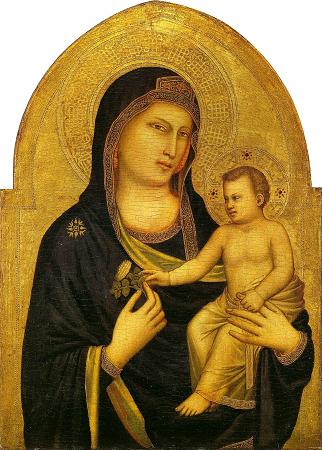National Gallery of Art. The National Gallery of Art, and its attached Sculpture Garden, is a national art museum in Washington, D.C., located on the National Mall, between 3rd and 9th Streets, at Constitution Avenue NW. Open to the public and free of charge, the museum was privately established in 1937 for the American people by a joint resolution of the United States Congress. Andrew W. Mellon donated a substantial art collection and funds for construction. The core collection includes major works of art donated by Paul Mellon, Ailsa Mellon Bruce, Lessing J. Rosenwald, Samuel Henry Kress, Rush Harrison Kress, Peter Arrell Browne Widener, Joseph E. Widener, and Chester Dale. The Gallery's collection of paintings, drawings, prints, photographs, sculpture, medals, and decorative arts traces the development of Western Art from the Middle Ages to the present, including the only painting by Leonardo da Vinci in the Americas and the largest mobile created by Alexander Calder. The Gallery's campus includes the original neoclassical West Building designed by John Russell Pope, which is linked underground to the modern East Building, designed by I. M. Pei, and the 6.1-acre Sculpture Garden. The Gallery often presents temporary special exhibitions spanning the world and the history of art. It is one of the largest museums in North America. Pittsburgh banker Andrew W. Mellon began gathering a private collection of old master paintings and sculptures during World War I. During the late 1920s, Mellon decided to direct his collecting efforts towards the establishment of a new national gallery for the United States. In 1930, partly for tax reasons, Mellon formed the A. W. Mellon Educational and Charitable Trust, which was to be the legal owner of works intended for the gallery. In 1930-1931, the Trust made its first major acquisition, 21 paintings from the Hermitage Museum in St. Petersburg as part of the Soviet sale of Hermitage paintings, including such masterpieces as Raphael's Alba Madonna, Titian's Venus with a Mirror, and Jan van Eyck's Annunciation. In 1929 Mellon had initiated contact with the recently appointed Secretary of the Smithsonian Institution, Charles Greeley Abbot. Mellon was appointed in 1931 as a Commissioner of the Institution's National Gallery of Art. When the director of the Gallery retired, Mellon asked Abbot not to appoint a successor, as he proposed to endow a new building with funds for expansion of the collections. However, Mellon's trial for tax evasion, centering on the Trust and the Hermitage paintings, caused the plan to be modified. In 1935, Mellon announced in The Washington Star, his intention to establish a new gallery for old masters, separate from the Smithsonian. When asked by Abbot, he explained that the project was in the hands of the Trust and that its decisions were partly dependent on the attitude of the Government towards the gift. In January 1937, Mellon formally offered to create the new Gallery. On his birthday, 24 March 1937, an Act of Congress accepted the collection and building funds, and approved the construction of a museum on the National Mall. The new gallery was to be effectively self-governing, not controlled by the Smithsonian, but took the old name National Gallery of Art while the Smithsonian's gallery would be renamed the National Collection of Fine Arts. Designed by architect John Russell Pope, the new structure was completed and accepted by President Franklin D. Roosevelt on behalf of the American people on March 17, 1941. Neither Mellon nor Pope lived to see the museum completed; both died in late August 1937, only two months after excavation had begun. At the time of its inception it was the largest marble structure in the world. The museum stands on the former site of the Baltimore and Potomac Railroad station, where in 1881 a disgruntled office seeker, Charles Guiteau, shot President James Garfield. As anticipated by Mellon, the creation of the National Gallery encouraged the donation of other substantial art collections by a number of private donors. Founding benefactors included such individuals as Paul Mellon, Samuel H. Kress, Rush H. Kress, Ailsa Mellon Bruce, Chester Dale, Joseph Widener, Lessing J. Rosenwald and Edgar William and Bernice Chrysler Garbisch. The Gallery's East Building was constructed in the 1970s on much of the remaining land left over from the original congressional action. Andrew Mellon's children, Paul Mellon and Ailsa Mellon Bruce, funded the building. Designed by architect I. M. Pei, the contemporary structure was completed in 1978 and was opened on June 1 of that year by President Jimmy Carter.
more...














